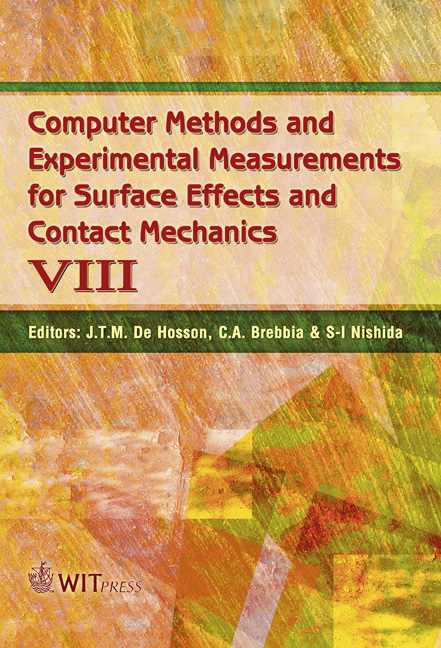In Situ Measurement Of Contact Area In Coated Surfaces
Price
Free (open access)
Transaction
Volume
55
Pages
12
Published
2007
Size
771 kb
Paper DOI
10.2495/SECM070251
Copyright
WIT Press
Author(s)
J.-H. Sick & G.-P. Ostermeyer
Abstract
Few attempts to directly measure the contact area of solid bodies have been made. In fact, it shapes up as a complex problem, because there usually is no direct access to the relevant surface of the experimental setup. Promising work in electrical measurement of the contact area by relating it to the contact resistance has been made by Bowden, Tabor and Holm from the 1930s on. This method has some restrictions due to the mutability of contamination layers involved in the most sensitive part of the setup. It is suggested to reintroduce observation of the contact area by electrical measurement, taking advantage of recent progress made in thin film coatings. By use of low conductive coating materials like oxides or carbon based films the contact resistance is increased by several orders of magnitude. The measured value of contact resistance in low conductive coated samples is within a range to be measured nearly independent of parasitic inductions like usual contaminations. Current work is on quasi-statical experiments and calibration. The first results joining earlier efforts are reported and the experimental setup, preparation method, advantages and known limitations are put up for discussion. Keywords: real contact area, contact model, friction, wear, contact resistance. 1 Introduction The question of how to measure the real contact area of solid bodies directly leads to the problem of defining the real contact area. Relationship of load and electrical contact resistance is investigated, thus observing effects influenced by parameters on a subatomic scale, leading to results perceivable in macroscopic dimensions. To define what to address as the real contact area is not quite simple. In the experimental setup the contact of a solid body dipped into a conductive
Keywords
real contact area, contact model, friction, wear, contact resistance.





